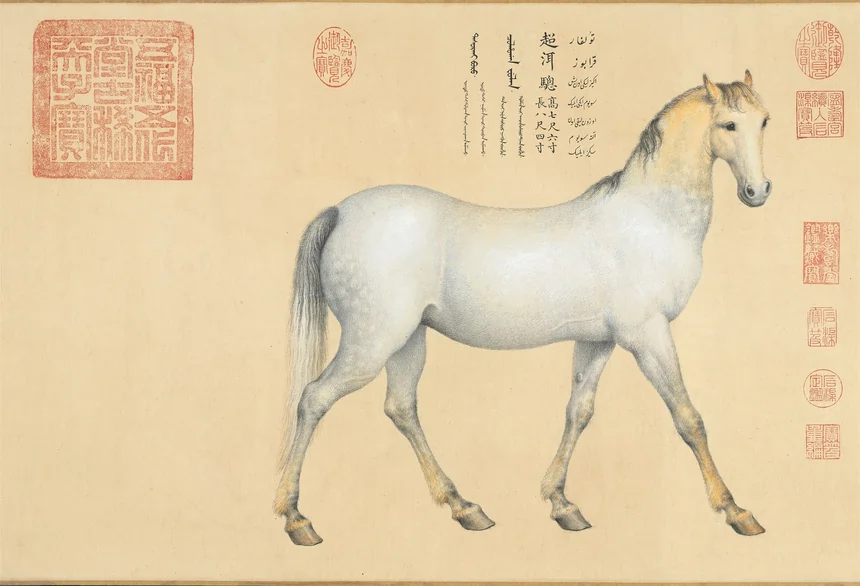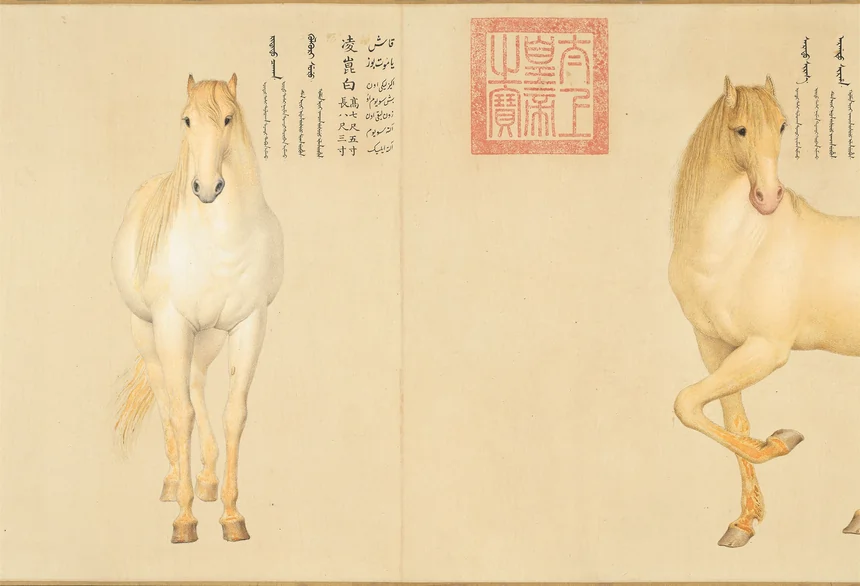In late 1762 Ahmad Shah Durrani sent an embassy to Beijing with a letter addressed to the Chinese Qing emperor Qianlong. The Afghan ambassador refused to perform Kowtow (to kneel and touch the ground with the forehead in worship or submission as part of Chinese custom) in front of emperor Qianlong. Chinese court was offended by that refusal and rebuked the Afghan ambassador, pointing out that even the Westerners and Russians had prostrated before the Chinese emperor. The Afghan ambassador, named Khwaja Mirkhan (Mir Khan?) then hesitantly performed kowtow in front of the emperor. Afterwards, according to contemporary Chinese records, Khwaja Mirhan was received at lavish imperial banquets and was invited to attend the annual Manchu ice-skating spectacles. He joined the emperor in the Happy-Together Garden and watched impressive military performances. He drank the imperial tea. According to Mountstuart Elphinstone, the Afghan ambassador had written an account of his trip to Beijing, but he was unable to procure it. That account is most likely not extant.
The Qing court pretended that the Afghan embassy was a tributary mission, but in reality, Qianlong emperor saw the Durrani empire as a rival power and was in awe of it. In the letter to the Qianlong emperor, Ahmad Shah Durrani asserted his status and power by recounting his splendid victory over Marathas at Panipat in 1761. This appears to a veiled threat. In 1768, Qianlong did not respond when in 1768 Durrani army invaded Badakhshan, the Qing vassal,
The Afghan ambassadors presented the gifts (claimed as tributes by Chinese) of four horses to the Chinese emperor which were painted by Giuseppe Castiglione, the official court painter.
The text accompanying the paintings describes Afghans and Afghanistan as follow:
“The Khan, Aihamotesha [Ahmad Shah Durrani], lives in the walled city of Kaidaha’er [Kandahar]. Aiwuhan [the Afghan country] is surrounded by mountains on all sides. It is full of rich fields. The people engage in agriculture. Local residents build their own houses and live spread out from each other. There is no record of a census having been made. They use shotguns, knives and long lances in the battlefield. They do not use bow and arrow. Among the Hui (Muslim) tribes they have long been declared powerful and prosperous. Recently again they annexed a neighboring tribe, Hindustan. They are growing bigger and stronger.
In the twelfth month of the twenty-seventh year of the Qianlong emperor’s reign, looking up to [the emperor’s] majesty and virtue, Aihamotesha [Ahmad Shah] sent the envoy Hezhuomierhan with tribute horses. Their letter to the emperor was respectfully written on gold paper, and it had to be translated by the Siyi guan.
The people (Afghans) are tall and stout. They wrap their heads with silk that has decorative design. They wear brown, long-collared upper garments with a long brocade-rimmed, open-front overcoat. The women also wrap their heads with silk that has a decorative design and wear pearl-hair accessories. They wear long strings of pearls on their ears, which hang all the way down to their shoulders. Their upper garments have brocade borders. They are diligent in weaving and spinning. The region produces good horses. The four horses of their tribute are all seven Chi (three Chi are equal to 100 cm) tall and eight Chi long. [“Writing Travel in Central Asian History” edited by Nile Green, p-107]
‘Four Steeds of Aiwuhan [Afghan]’ paintings by Giuseppe Castiglione are placed in the National Palace Museum, Taipei, Taiwan. Source



